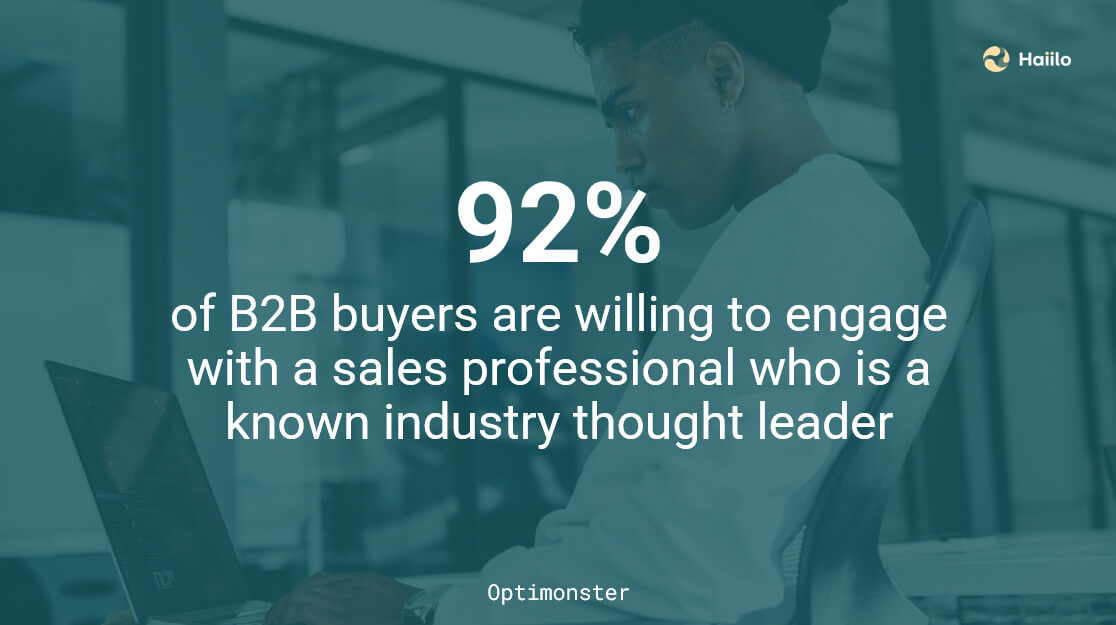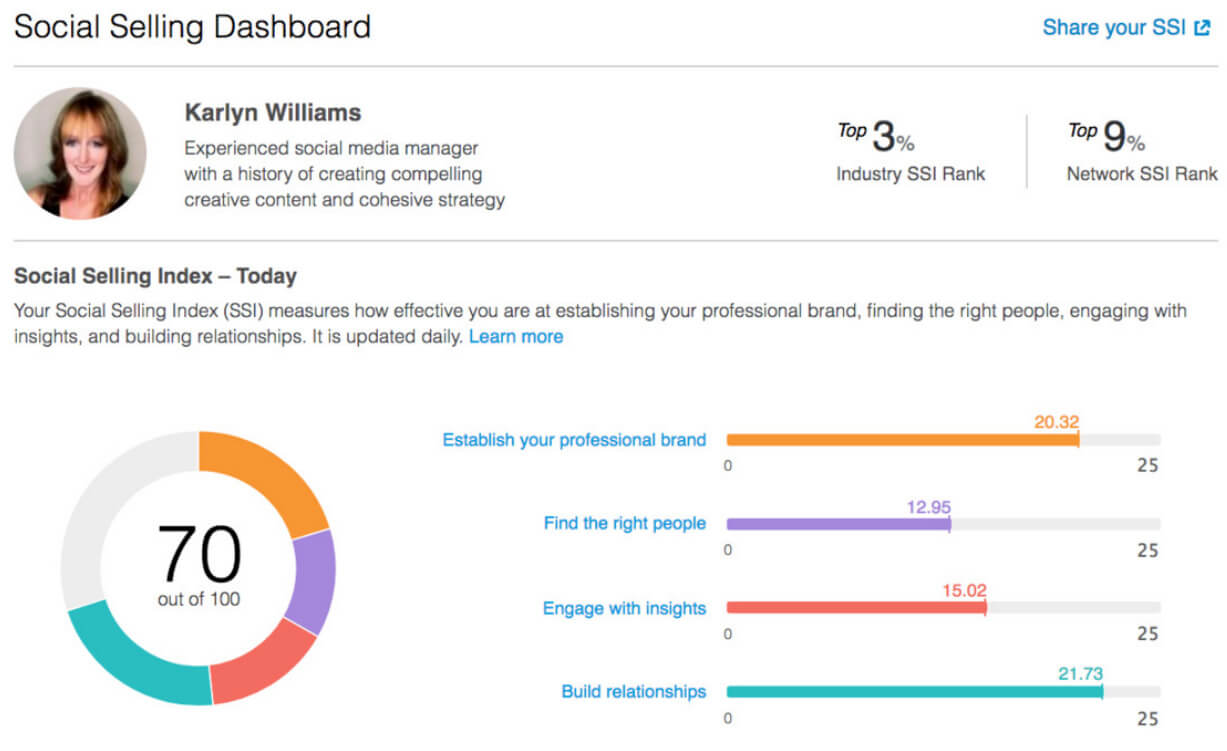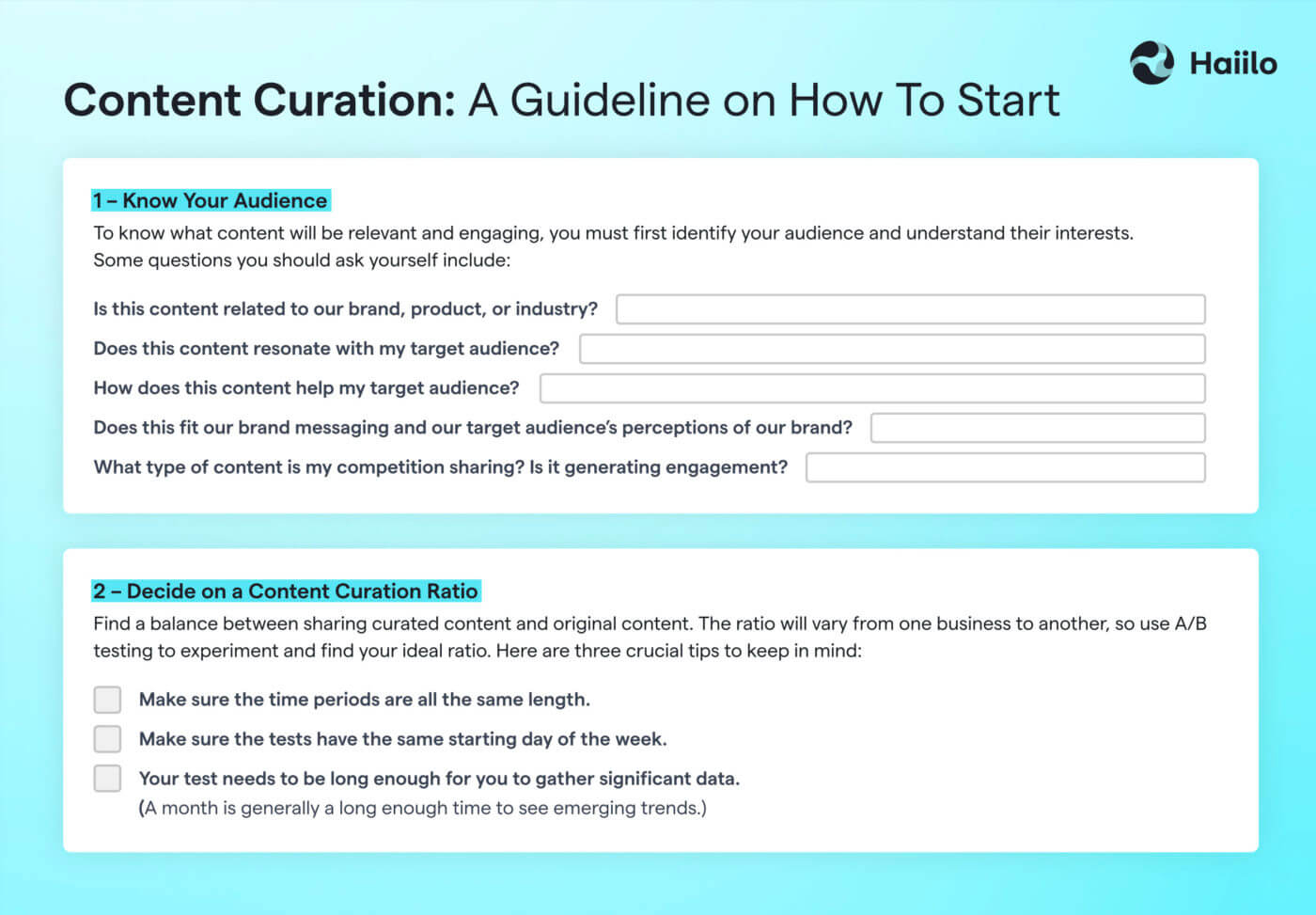Social selling has become a must-have strategy for most SDRs, marketing, and other sales professionals. Leveraging social media to build connections, generate new leads, and become an industry thought leader is common nowadays.
But why is social selling so important? How to do it right? What are some best practices? And how to make sure that you get the best out of your social selling campaigns?
Keep reading because this blog will answer these questions and explain why social selling is one of the most important social media trends to follow in 2023.
Looking for a powerful social selling and employee advocacy solution for your organization? Schedule a Haiilo demo and learn how it can help your company!
What is Social Selling?
There’s no single definition of social selling since no individual uses social media in the same way. However, in its simplest form, social selling can be defined as a lead-generation technique in which sales professionals use social channels to interact with their leads and prospects directly on social media. Today, social selling is a part of every successful social media marketing strategy.
There are many different ways to do social selling and social marketing. Some are more invasive, while some focus on strengthening one’s personal brand to build trust in the community.
Some are long-term strategy-focused, while others may be focused on short-term goals and end-conversions solely.
In any case, social media platforms can be a powerful way to close new customers and drive more revenue.
Research tells us that 98% of B2B enterprises see value in social selling, but only 49% of them have developed social selling programs.

Top 4 Reasons Why Social Selling Rocks
In the past few years, social media engagement has been skyrocketing. With the emergence of remote work and travel restrictions, it has been harder for sales professionals to meet with their prospects in person or attend events to find new opportunities. So they needed to find ways to curate content on online platforms.
This is why we have seen an increase in social selling and LinkedIn marketing in the past few years.
But why is social selling so powerful?
1. Generate more sales
The main and biggest reason why companies and sales professionals engage in social selling is lead generation and more sales. There is plenty of research that proves the power of social selling.
According to LinkedIn Sales Solutions’ internal data:
- Businesses that are leaders in the social selling space create 45% more sales opportunities than brands with a low social selling index.
- Businesses that prioritize social selling are 51% more likely to reach their sales quotas.
- 78% of businesses that use social selling outsell businesses that don’t use social media.
2. Build trust in the community
Social selling can go a long way in increasing your brand’s trust and share of voice. In B2B, especially enterprise, sales cycles can take months. So the most successful sales professionals in this market are the ones who are continuously building trust among their target audience.
92% of B2B buyers are willing to engage with a sales professional who is a known industry thought leader, and social selling is a perfect way to build such reputation. Also, 40% of professional sellers and 51% of decision-makers believe that trust is the key ingredient in closing deals.

💡 Related: Learn about how to implement a killer social media strategy!
3. Be where your customers (and competitors) already are
Everyone is on social media, so companies and their employees need to be there as well.
According to Statista, 25% of Americans ages 18 to 34 made a purchase via social media. India, the UK, Australia, and New Zealand all saw approximately a third of people ages 18 to 34 make a purchase via social media in that same timeframe.
The potential for brands to make social sales is just huge. 4.2 billion people worldwide are active on social media, and social media platforms gained 490 million users in 2020 alone (increase of 13.2%).
Hence, organizations need to leverage social selling to stay competitive in the market. Other brands interact with their potential customers on social media as well, so not being there can be a big disadvantage for organizations.
💡 Also, learn about best practices for social media in the workplace!
4. Gain more visibility from the best talent out there
Currently, we are in the era of great resignation. People change jobs more than ever before, and employers struggle to attract and keep the best talent out there.
Besides boosting your company’s brand awareness, social selling can also be a great employer branding tactic. When leaders, sales professionals, and other employees engage in content sharing on social media, they are also getting in front of the eyes of potential job candidates.
Since candidates trust employees more than they trust brands, social selling is considered a powerful social recruting method!
6 Social Selling Best Practices
Every professional has a different approach when it comes to social selling. There are, however, certain best practices that apply to all. These best practices are best explained in what’s called a Social Selling Index introduced by LinkedIn.
The social selling index (SSI) is a metric used to measure the impact of a brand’s social selling efforts.This concept looks at whether you are:
- Establishing a professional brand with a well-managed LinkedIn profile.
- Finding the right people on the platform.
- Sharing relevant, conversation-inspiring content.
- Building and strengthening relationships.

But let’s take a closer look into what you can do to improve your social selling efforts.
1. Improve your social profiles to establish a strong brand
First impression matters! So it’s important that your employees develop good social selling skills.
Since social selling usually makes more sense for B2B verticals, LinkedIn tends to be the most popular social selling platform.
Luckily, LinkedIn offers many features you can use to position yourself as a thought leader in the industry. At the very least, ensure your profile has the following:
- An up-to-date, professional profile picture with clear resolution.
- A summary explaining how you and your company help clients.
- An explanation and description of your previous roles.
Remember, if you are a sales professional, your profile should be optimized for selling your product and services to prospects – not yourself to recruiters.
💡 Extra tip: Don’t forget to include relevant links to your company’s products and service offerings. Include UTM parameters and ask your marketing team to help you track the outcomes.
2. Build the right connections
Understanding your company’s ideal customer profile (ICP) and buyer personas is crucial for building the right audience on social media.
If you are using LinkedIn for social selling, you can use various filters to find relevant connections. Filters such as job titles, job seniorities, industries, company size, geo locations, company names (great for account based selling) provide a powerful way to find and connect with your target audience.
While it may be tempting to automate this process with various automation tools, taking a more personalized approach usually pays off long-term.
💡 Related: Social selling is not all about sales!
3. Regularly share content relevant to your audience
Once you understand your ICP and buyer persona, it’s easier to create content relevant to them. Here, it is important to be original and consistent.
Companies that understand the power of social selling usually have ready-to-be-shared content available to every employee in the organization. This way, they are saving valuable time sales teams would otherwise spend creating their own thought leadership content.
This is a great way not only for sales to gain more visibility, but for the company to drive more traffic to the website.
Did you know that nearly 50% of social traffic to B2B websites comes from LinkedIn?

💡 Extra tip: Use LinkedIn articles to publish your own original content on LinkedIn. These usually gain more visibility because LinkedIn pushes its own content more than content coming from other sources.
4. Pay attention to existing customers
For most businesses, social selling is all about creating new relationships. Even thought taking care of existing customers may not be sales’ responsiblity in your organization, it is very important to pay attention to them.
Why? Well because getting a new customer can cost 5X more than retaining an existing customer. And, if a customer has bought from you once, they’re more likely to buy again.
💡 Extra tip: Consider creating a system in which your sales team can easily pass their social insights to the customer success and customer support teams, and create an incentive program to encourage them to do so.
5. Get familiar with various platforms
Not many sales professionals take enough time to understand various features that different social media platforms offer. If your organization does social marketing, then you should get help from marketers in your team.
Ask them for ideas abut how to build relevant connections using features and functionalities various platforms have. While using LinkedIn filters is pretty straightforward, to be successful on Instagram, for example, you will need to really get deep into hashtags (#) to find the right audience.
6. Leverage the power of technology
Doing social selling without the right technology is hard. Luckily, there are tools and apps that make social selling much easier for employees and more efficient for organizations.
The biggest benefit of using such tools is the ability to make social selling programs more intuitive, structured, and measurable.
And why is it important to formalize social selling? Because companies with formalized social selling processes are 40% more likely to hit revenue goals.

10 Powerful Statistics About Social Selling
The power of social selling is inevitable. Hence, it is not suprising that more and more companies are investing in this selling methodology and are investing in appropriate technology to better enable their sales and marketing teams.
Let’s take a look at the most powerful statistics that prove the importance of social selling:
- According to 39% of B2B marketers, social selling reduces their account/contact research time which makes it their top reason for using this sales strategy.
- A Forrester study found that 49% of B2B enterprises already have a social selling program today.
- 33% of users prefer to contact brands using social media instead of making a phone call.
- 84% of CEOs and VPs say they use social media to help make purchasing decisions.
- Customers report spending 20%–40% more money on brands that have interacted with them on social media.
- 76% of buyers are ready to have a social media conversation with potential providers.
- More than 50% of revenue across 14 major industries is generated by social sales.
- 47% of buyers view at least 3-5 pieces of content before they contact a sales representative
- Accenture’s State of B2B Procurement Study finds that 94% of B2B buyers conduct some degree of research online before making a business purchase, with 55% conducting online research for at least half of their purchases.
Social Selling Beyond Your Sales Team
Should social selling be reserved for sales reps and marketers only?
Absolutely not! Social selling should be a company-wide effort.
Did you know that companies with employee advocacy programs can boost the reach of the company’s stories 500% further compared to messages from the company profile?
Moreover, employee advocacy on social media is often considered as the most efficient and most affordable way to improve your company’s visibility, marketing and sales efforts.
In order to make it work, however, it is crucial to enable employees to be brand ambassadors. This process should be easy, yet structured and consistent.
Most decision-makers (89%) find consistent marketing and sales language important, but nearly half (48%) say they receive different information from the sales and marketing teams. Having a structured program can eliminate this challenge significantly.
Structured advocacy programs:
- Provide a central hub of company’s content and information in a single place, ensuring consistency and unified tone of voice
- Make it easy for employees to share company’s information on social media within seconds
- Ensure high employee engagement by gamifying the entire experience
- Enable and encourage the creation of employee-generated content
- Offer powerful analytics and insights about the ROI of brand amabsassadorship










